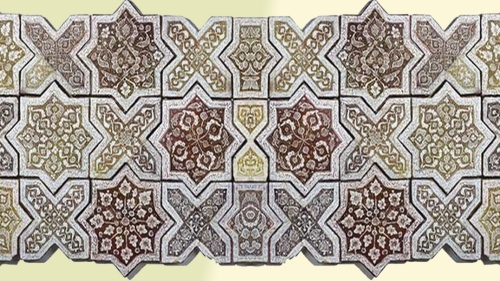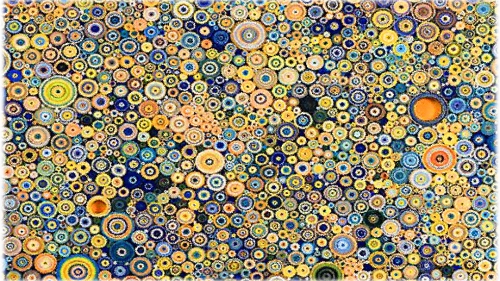PAS's Proposal to Build 'Multicultural Mosque' in Kelantan Laudable
It was recently reported (Harakahdaily.com, 30th October 2000) that the state government of Kelantan wishes to host a 'Pesta Kesenian Cina' (Chinese Cultural Fest) in an effort to woo tourists to the state which has been under the control of the Pan-Malaysian Islamic Party (PAS) for the past ten years.
Admittedly, the move itself is political in many ways. After being returned to office for the third time running, PAS in Kelantan feels- rightfully- that the time has come for it to reward the non-Malay constituents who have given it their support time and again. In itself there is nothing awkward or unusual about this, and one could even say that it makes for sound political judgement and good political sense of the part of the leadership of the party.
The Chinese Cultural Fest, which will feature both traditional Chinese as well as traditional Malay folk art, cultural activities, music and performances will be a good way to emphasise the multicultural dimension of Malaysian life which is a part of living reality that cannot be ignored.
Of even greater interest is the proposal to build a 'Multicultural' mosque in the state that would reflect the diverse cultural influences in the Malay world- ranging from Chinese, Indian, Siamese, Malay and other sources. Should this project come to fruition, it would be one of the few occasions when there has been a conscious attempt to reflect the multiculturalism of Malaysia in concrete terms. That this has not been successfully done so far is a reflection of the failure of the nation-building process in the country. Should it succeed, PAS would have once again managed to set the agenda in yet another area of government and social relations in the country.
Looking at the present state of affairs in the contemporary Muslim world, one could say that such a project is not only timely but also worthy for a number of reasons. For the past few decades, we have witnessed the mushrooming of hundreds, if not thousands of so-called 'Petrodollar' mosques all over the world, built through the sponsorship of richer oil-producing countries like Saudi Arabia. These mosques, which litter the landscape of the Muslim world from Morocco to China, all have the same features and designs that reflect the cultural identity of their sponsors and patrons rather than the unique and particular cultural identities of the people they were intended for. When one looks at the new mosques being built in countries like Pakistan, China, Indonesia, Bangladesh and other poorer Muslim states, one can only lament the loss of traditional norms and standards of aesthetics and taste. Invariably, many if not all of these petrodollar mosques appear as if they were conceived on the same blueprint: they all have the same time of 'Onion-shaped' dome, the same type of Arabo-Mooresque Minaret, and are made from the same sort of materials (brick and cement).
Yet not too long ago, the Muslim world was rich with thousands of types of mosques that grew organically from their specific local settings. These mosques reflected the local artistry and local genius of the people who built them. Hence the mosques in Malaysia and Indonesia, for instance, were made of wood and stood on pillars. This kept them cool, open and accessible. They also reflected the form of Islam that was Sufi-inspired, down to earth and shorn of pretentious vainglorious trappings of worldly power and self-glorification. The traditional Malay mosque, humble and understated though it was, managed to capture the essence of Islamic piety better than any treatise on Islamic ethics ever could.
It is also important for us to note that many of the traditional mosques in Malaysia and Indonesia reflected the multiculturalism that already existed in their social milieu. Hence the obvious influence of Chinese and Indian art which can be seen in the minute but important details we find on the minbars and other parts of the building's structure. Those who have visited the traditional Malay mosques in Melacca, for instance, cannot fail to notice the obvious Chinese influence that is clearly evident in the Chinese tiles, brackets and various wood fittings that can be seen outside and inside the structure. These mosques, with their multiple-layered roofs, also embody the complex Sufi-inspired cosmology that viewed human existence in the profane world as a progression of stages, leading eventually to a deeper consciousness of God who resides at the peak of it all.
All of this was lost during the decades of rapid modernisation when Malaysia and Indonesia were exposed to modern technologies and designs from abroad. During the colonial era the Malay mosque gave way to the Orientalist 'Moorish' mosques introduced by the British.
In the post-colonial era, on the other hand, the traditional Malay mosque came second to the modern mosques of concrete and cement. New materials like zinc, steel and synthetic materials were used to build cheap- and in the final analysis, ugly- mosques that were neither Malaysian nor foreign in conception and appearance. We ended up with hundreds of ugly mosques built hastily and on the cheap, using production methods and designs that were alien to the local social and cultural environment.
In the light of these developments, the decision of the PAS government in Kelantan to build a Malaysian mosque which reflects the various arts and styles of the different ethnic groups in Malaysia comes as a welcome change to the norm. Should the state government succeed in this task, they would have managed to go against the grain of contemporary developments and halted the spread of more 'Mega-Mosques' that look as if they came from Samarkand, Bokhara, Isfahan or Arabia.
While the traditional Malay mosque was smaller and humbler in its appearance, it must never be forgotten that its humility was its ultimate strength. The small, rustic, wooden Malay mosque stands as a testimony to the phenomenal spread of Islam throughout the Malay archipelago- which was achieved without bloodshed and conquest. Here we have no need for such overblown (and expensive) imperial architecture. Those who conceived of the Kelantan mosque project should therefore be congratulated for reminding us of the fundamentals of Islam in the truest sense of the word. One can only hope that the project succeeds and that the mosque that is finally built would reflect this dimension of Islam which has been so badly neglected of late.
(Dr. Farish A. Noor is a Malaysian political scientist and human rights activist. He is currently teaching at the Islamic Studies Department, Freie Universitat of Berlin and writing a book on the Pan-Malaysian Islamic Party, PAS.)

















